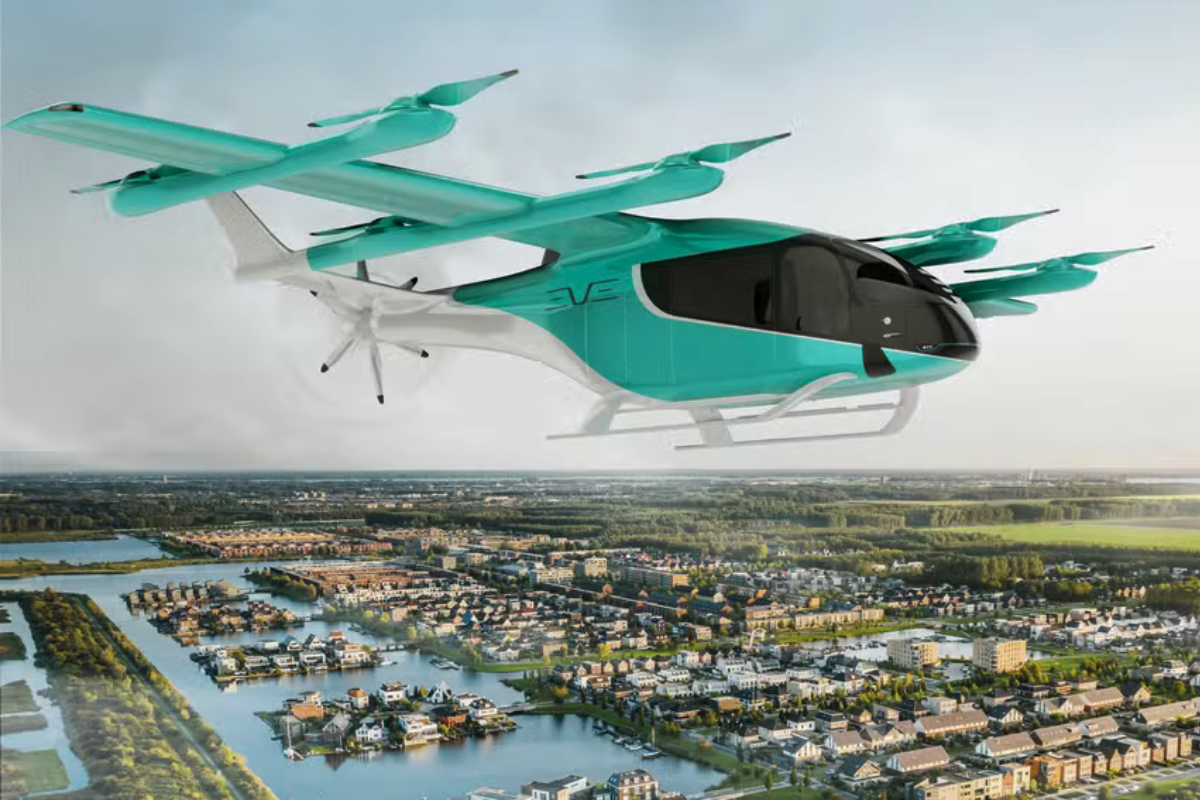Eve Air Mobility, a startup spun off Embraer’s innovation arm Embraer-X years ago, hopes to have the first full-size prototype of its aircraft ready by the end of this year and flying by the end of 2026.
Daniel Moczydlower, Embraer-X’s president, said at Web Summit Rio that Eve’s electric vertical takeoff and landing (eVTOL) vehicle is being built in the city of Taubaté, in the state of São Paulo. The first flight tests should also take place later this year in the city of Gavião Peixoto, 330 kilometers from the capital of São Paulo, he told the press.
The company expects to have everything it needs (data on ground and flight tests, as well as wind tunnel data) to get the first green light from regulators by the end of 2024. Embraer’s Taubaté plant was announced in mid-2023, months after selecting the suppliers for the project.
With Embraer having decades of success producing new aircraft and working with Brazil’s civil aviation regulator Anac, Eve believes it could be the first to get such certification. The idea is to engage with Anac first, while also signing a bilateral agreement with the U.S. Federal Aviation Agency and obtaining a follow-on certification from regulators in the European Union.
This step is crucial, as it is not enough to create a prototype that can fly; a company’s model must meet several industrial requirements and be replicable and marketable. This is what can make Eve “win” the race with other air mobility startups worldwide.
So far, Eve has letters of intent for nearly 3,000 eVTOLs, and the aircraft is expected to enter into service in 2026. The latest was signed last week with AirX, Japan’s largest public helicopter air charter service, for up to 50 eVTOLs.
The startup forecasts revenue of USD 4.5 billion by 2030, when it also expects to see its first vehicles flying in autonomous mode. The projection is based on an expectation of capturing at least 15 percent of the total addressable urban air mobility market, which is expected to be worth around USD 31 billion by then.


 Search
Search






































